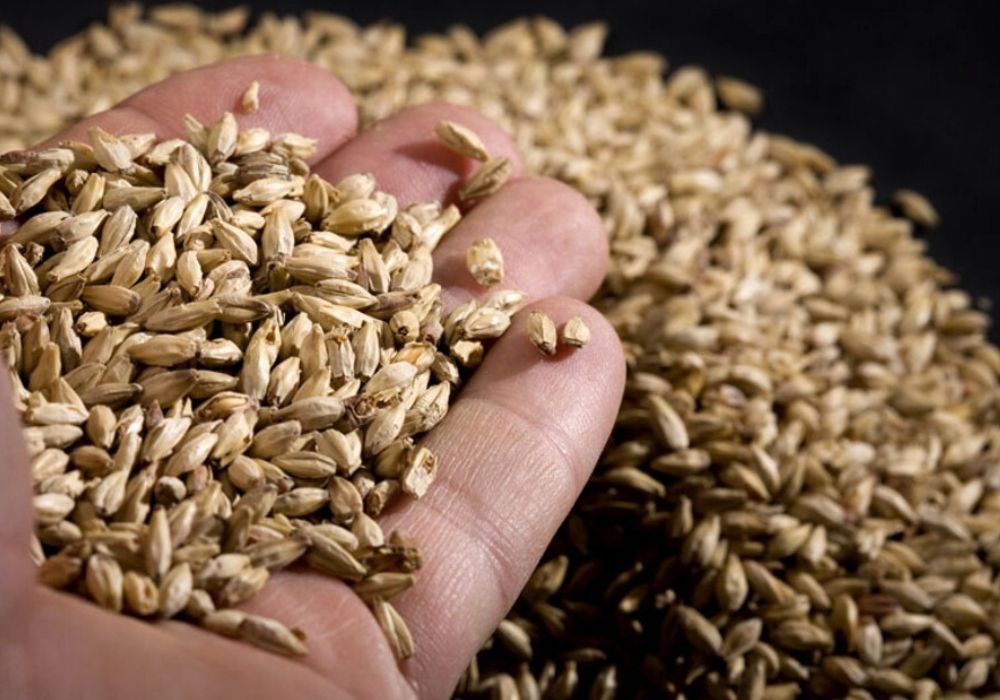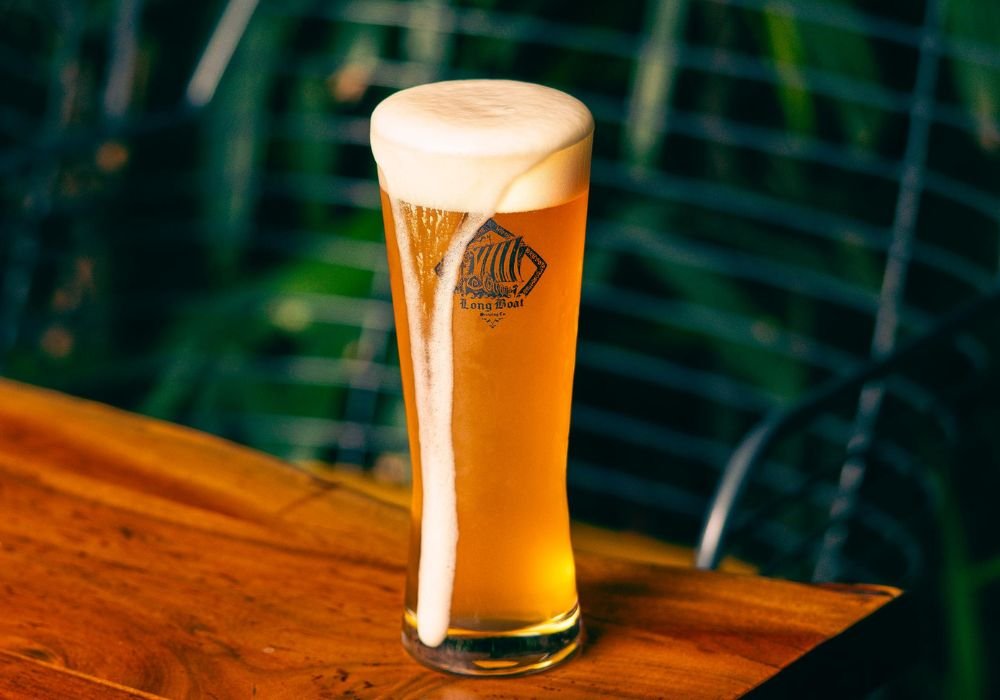Capitalising On Yeast Innovation For The Future Of Brewing: Fermentis’ Stéphane Meulemans Tells Us More
Globally, beer is a 600-billion dollar market that’s heavily characterised by rapidly shifting trends and an ever-expanding discerning audience who is willing to pay a premium for an authentic experience.
It is also an industry that rides high on innovation. As such, it enjoys the loyal support of allied partners who take concepts and technologies from other industries and infuse them with ground-breaking research to challenge existing philosophies and processes for a better future. Those who thrive in this industrial ecosystem aren’t just business makers – but also problem solvers and early adopters of future trends.
And at the helm of this revolution, is yeast innovation.
Today, researchers state that “modern beer strains are the product of a historical melting pot of fermentation technology.” Thanks to key players in the yeast segment, more and more brewers are enabled to harness the power of this brilliant micro-organism to produce better beer that meets the dynamic demands of the market, while at the same time, optimising flexibility, sustainability, yield, efficiency and manufacturing costs.
Fermentis, a business unit of the Lesaffre Group, has been a global leader in the research and development of fermentation products for the food, biotechnology and beverage industries for nearly 170 years and is recognised as a globally renowned pioneer for its contributions to the yeast and fermentation landscape. Fermentis enjoys enabling brewers to harness the power of this brilliant micro-organism to produce better beer that meets the dynamic demands of the market, while at the same time, optimising flexibility, sustainability, yield, efficiency and manufacturing costs. And like all other pioneering brands with a vision, Fermentis’ passions are reflected in the people that represent it.
Take Stéphane Meulemans, General Manager of Fermentis, for example. Recognised in the industry for his outstanding contribution to beer and brewing, not just as an expert in biotech products but as a seasoned brewer and business entrepreneur – Stéphane’s career, like so many others in this industry – started with beer.
On His Personal Life And Career Journey
“I’m Belgian born and raised and as the world knows, beer is one of the very strong cultural indicators of Belgians,” says Stéphane. “I was introduced to beer at an early age because my parents allowed us to drink it at home along with wine and other beverages. But beer – and the whole science and chemistry of it was always very intriguing to me and I developed an interest in the subject very early in my life. As such, I started to orient myself towards the brewing industry. I studied chemical engineering and food science, then followed it up with brewing engineering and finally sealed everything with a business administration degree. I started off as a hops trader and then invested in my own brewery with a partner, running it as a successful business before joining Fermentis in 2014 as General Manager.”
“I think it’s safe to say that beer for me has always been kind of a passion and it’s that same passion that I’ve followed all throughout during all my career, since my early working days.” – Stéphane Meulemans, General Manager of Fermentis
With yeast being one of the key flavour imparters in beer, we asked Stéphane what his observations were on the evolution of consumer palate with respect to beer. His answer is straightforward, yet insightful. “I think the customer palate kind of adjusts to what the brewer offers,” says Stéphane. “One strong observation I made in the United States in the eighties and nineties was that a majority of the beers, if not all, were very low on bitterness – typically slightly lower or higher than 10 IBU. Brewers then decided to put the versatile qualities of hops to the test and made more beers that were characterised by hops. The result was, we had beers that were 30, 40 – sometimes even 50 IBU. The general consensus then was: these extremely bitter beers would never work as the consumer palate wasn’t adjusted to bitterness.
But thanks to these brewers who loved their beer and had a genuine desire to educate their audience about the beverage and the art of brewing it pushed these beers to the market and today, you have the IPA that’s one of the fastest-selling and most popular beer style in the U.S. – at least in the last couple of decades.
What this tells me is that beer diversity has existed for a very long time. It’s true that the panorama was simplified for years after the Second World War in terms of flavour, standardization, and uniformity. Today, it continues to grow even faster and people are adapting, albeit at their own paces in different parts of the world.”
On Embracing Diversity, One Strain At A Time
Addressing flavour diversity has become a huge part of brewing and consuming beer in the twenty-first century. But at what point did this explosion in flavour and beer styles start?
“In my career, I’ve seen several developments. It was after World War II that beer – mainly lager beer, started moving towards commercialisation and mass production,” explains Stéphane. “In the early ’90s and 2000s, we were more about simplification and less about diversification in raw materials. The focus was centred on bottom-line profitability for a lot of brewers and craft breweries were not so popular at that time. It’s only at the end of the eighties and nineties that the craft brewing scene started to redevelop the restaurant industry. This was very quickly followed by beer diversification.”
The credit for this sudden burst of diversification, according to Stéphane can really be attributed to many countries in the Western Hemisphere, particularly the United States.
“Beer diversification started first with hops as more and more brewers started experimenting. It was only natural that the trend would continue with other raw materials as well and sure enough, since the last 15 – 20 years now, there has been a strong emphasis on the contribution of yeast towards beer diversification.” – Stéphane Meulemans, General Manager of Fermentis
Unfortunately, it’s difficult for a brewer to work with a wide range of yeast strains. “Brewers can typically manage one to three strains, but anything beyond that is difficult,” says Stéphane. “At the same time, the contributions of yeast in making beer more and more diverse in terms of flavour, aroma and mouthfeel are undeniable.
Today, brewers continue to look for more choices of yeast strains to meet rising demand through a larger variety of new beer styles and types. When I started my career there were only about 50 or 60 different beer styles recognised by international beer standards. Today this number has grown to almost 150. Also, it’s not just each beer style, but each beer itself that’s so unique – and that I think it’s this factor that calls for more diversity in raw materials too.
Thus, as allied partners of the beer industry, we have plenty of opportunities to reposition yeast strains that are more specific to beer styles. This way, we can ensure we continue driving further development in the landscape of yeast.”
On Kicking Off The Easy-To-Use Yeast Revolution For Sustainability, Even During Uncertainty
Advances in technology have ramped up production to meet rising demand year after year but raising some major social and environmental concerns. With a brewery using anywhere between three to seven barrels of water just to make one barrel of beer and consuming a staggering average of 207 mega-Joules per 100 litres, (roughly 0.2 kilowatt-hours per bottle) – beer makers and their allied partners have responded to the call for corporate social and environmental responsibility, upping their sustainability game to reduce water consumption, wastewater disposal and overall carbon footprint. What role does Fermentis play in this space?
“Sustainability is a trend that relates to the consciousness of people around the world that’s driving the need for more products focusing on preserving our resources and avoiding any wastage,” says Stéphane. “Sustainability initiatives in the brewing industry can expand across many verticals but yeast is one of them as well. I’m proud to say that Fermentis has been quick to align itself with these requirements and pick up on this need, officially starting a new trend of easy-to-use active dry yeast that helps brewers save time and resources.
Brewers have been responding very well to our E2UTM (Easy-to-Use) Active Dry Yeast technology. Prior to this, brewers had plenty to do in terms of taking care of yeasts before pitching. They had to be rehydrated and acclimatised to the brewing conditions – meaning water and mash temperature have to be constantly monitored.
But with our E2UTM range of active dry yeast, brewers can now slash their preparation time in half as they now have the option to pitch directly. It makes a brewer’s life easier and is great for cutting down water and energy usage and wastage, without compromising on any of the characteristics of the beer.”
Today, with the pandemic disrupting supply and logistics chains across industries, the need to innovate is stronger than before. Once again, Fermentis’ E2UTM range of Active Dry Yeast comes to the brewer’s rescue.
Yeast that does not need any prior rehydration can be pitched directly without negatively impacting the phenology aspects of beer and can be stored for long-term usage is a dream come true for brewers during these times when you cannot be physically present at the brewery or when you’re not sure of what’s going to happen next. “Active dry yeast technology allows brewers to continue operating with maximum performance and flexibility during uncertain times,” affirms Stéphane. “The combination of dry yeast along with a number of other yeast strains makes it a very easy-to-use and the obvious choice for beer fermentation. It is perfectly aligned with the expectations of the brewer to produce more diverse styles of beer with ease and with those…consumers who expect to see more diversity in terms of flavour and types – keeping craft beer alive and resilient even during disruption.”
Re-imagining NOLO Beer With Yeast Technology
Factors like rising health concerns, conscious lifestyle choices, tight restrictions on alcohol and now – the pandemic, have been responsible for driving growth in the no and low-alcohol (NOLO) beer segment. Today, they are an established beverage category that’s expected to witness a global growth by 34% in volume between 2019 and 2024.
But beer makers are also attributing this skyrocketing growth to the overall progress and improvement in the flavour and quality of alcohol-free beers – many of which used to be described as either “too yeasty” or “too watery”. Brewers are now working extra hard to cut down artificial aromas and sweeteners used to mimic the quality of alcohol-containing beers brewed via fermentation. Some brewers have also started exploring manufacturing processes that permit the gentler removal of alcohol, thus retaining the taste of the beer. Turns out, yeast has a huge role to play here as well!
“One of the ways to produce no and low alcohol beer is by controlling your fermentation,” elaborates Stéphane. “At Fermentis, we have focused a lot on methodology and technology to produce fermentation solutions for no and low alcohol beers. We have a careful selection of specific yeast strains that ensure they produce very little alcohol based on the original density of the wort. Moreover, these yeast strains also contribute to the whole balance of the beer in terms of flavour, aromatic components and taste.
Alcohol, as you probably know, is the main contributor to the balance of the beverage and that’s why it’s a challenge today to produce a no or low alcohol beer that offers an enjoyable drinking experience. But those are the attributes Fermentis has focused on when developing these yeast strains and we shall continue to focus on this. The trend towards healthy beverages will continue – especially with the pandemic highlighting that moderation and wellness trends are increasingly resonating with consumers. The low-and no-alcohol sector has remained resilient through the crisis and has an immense future for itself and we are determined to align ourselves with that.”
The Road Ahead For Fermentis
With so much going on, what’s new at Fermentis, we ask Stéphane. What’s next?
Surprisingly, this time, it isn’t a new product. It’s something much bigger.
“Everything we do, in any respect – be it research and development or marketing and communications, sales or supply chain projects – is only to fulfil one goal – our main vision,” says Stephane. “The goal of becoming the obvious choice of beverage fermentation towards the fulfilment of the dream that we are for beverage manufacturer – no matter what their brewery size or where they are brewing – be it in their kitchen or garage or something large scale.
And so we have major projects aligned with that, one of them being the creation of the Fermentis Campus and Fermentis Academy, which is all focused on applied research. In one dimension, this research helps to understand better how our products work in the diversity of all the fermented beverages around the world, what they deliver and why a brewer should choose our products.
In another dimension – we aim to share the knowledge we have learned through education. So we are building a house for Fermentis that will host all of our core team and of course, our visitors, partners, distributors, and customers. Going forward, we are looking at holding plenty of educational and training sessions and from there, we hope to be able to share all of our knowledge around the products.
It’s a big project and a major capital investment, but one that greatly benefits our staff, and more importantly, our customers, partners and distributors around the world.”
On Being A Part Of The Brewing Community And His Love For Beer
With his passion for beer, fuelled by his keen entrepreneurial drive and expert brewing background, Stéphane is just as proud to be a part of the Belgian brewing community as he is being part of one of the world’s leading suppliers of biotech solutions for the brewing industry. “The craft brewing industry is a great community. There is so much exchange of ideas and collaboration; I absolutely love the transparency and the pleasure to share knowledge and expertise. Every meeting always ends up with beer and sharing a beer and discussing new ways to make better beer,” gushes Stéphane, as he reminisces about his early brewing days.
“Historically and traditionally, Europe was a source of inspiration because the wide diversity of beers you see today in the world originated primarily here – in places like the United Kingdom, Germany and Belgium. In my own brewery in Belgium in the early 2000s – we used to host so many brewers from around the world that came to Belgium on trips to rediscover beer, be inspired by beer and explore new possibilities with recipes that they could take back and produce in their home country. And there were people coming from China, from the United States that came to our little brewery just to understand and learn more about typical beers.”
Like most beer lovers, Stéphane is fond of many different styles of beers, though, he admits, over the years, he has become more and more critical. As a result, he began orienting his choices more towards beers he knew whose quality is consistent and unsurpassable. “My most beloved style has got to be the Trappist-style beers or Abbey beers, as they’re sometimes called, and my favourite is the Orval beer from the Orval Abbey in Belgium,” says Stéphane almost instantly when asked about his favourite beer. “It’s such a special beer: on one side it’s characterised by dry hopping and on the other, it’s characterised by these rich malty flavours. In the end, it is also distinguished by the Brettanomyces culture in the bottle which evolves throughout maturation to give the beer a whole new life.
The beer has very refreshing, fruity notes early on when it is brewed fresh – leaning more towards complex, cheesier notes as it ages – and that makes this beer enjoyable with food of many kinds, mainly cheese. Beer pairs well with just about any Belgian delicacy, but I especially love a good beer and cheese pairing as much as I love a beer and chocolate pairing.
I’m also fond of funky, sour beers: I think these wild beers offer a huge diversity of profiles, although they can definitely be a bit rough on the palate if you’re not accustomed to the taste,” he adds, signing off
Brewer World Exclusive



